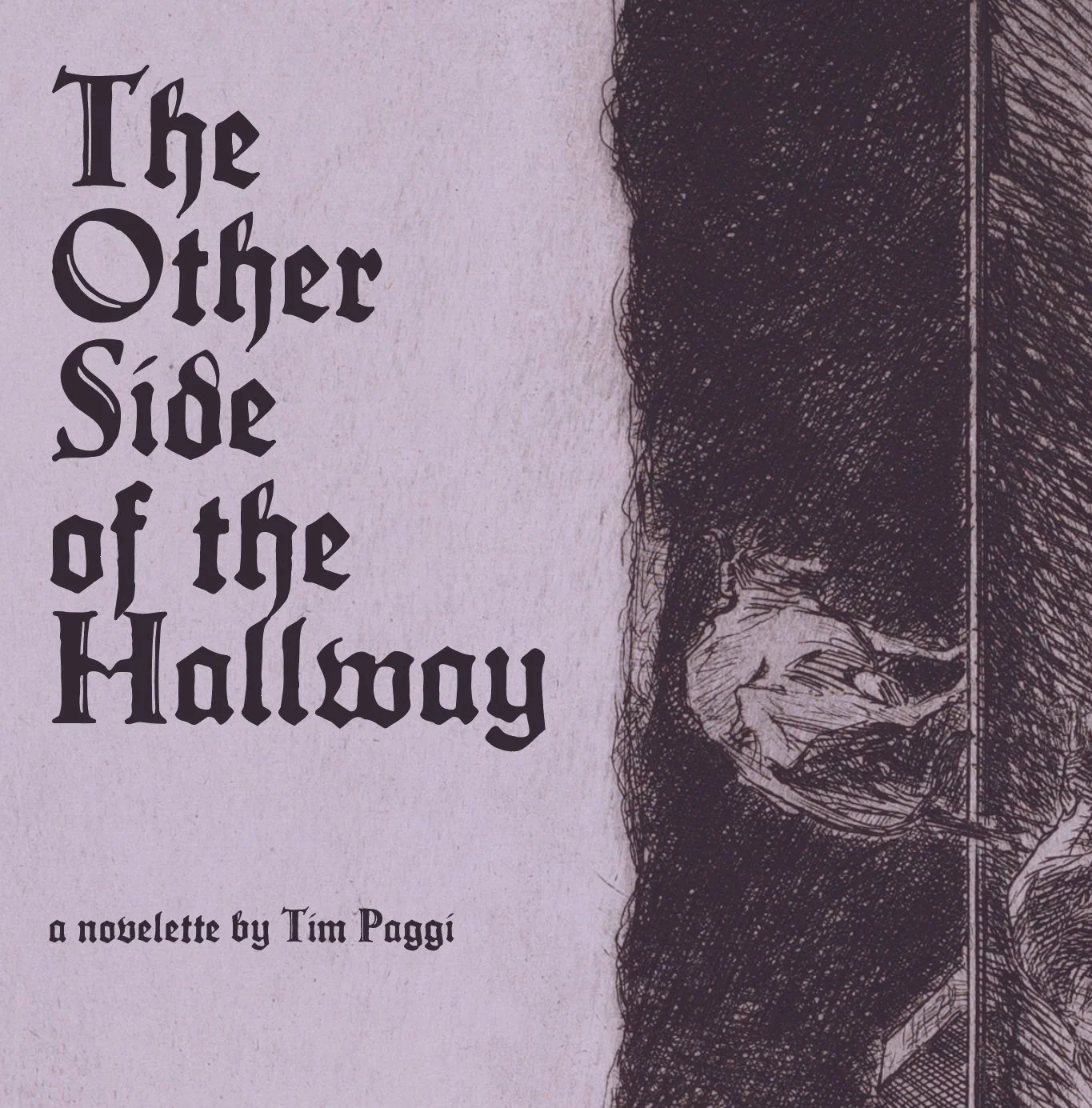spotlight: The Other Side of the Hallway
Re: The Other Side of the Hallway
There’s a hallway on the fourth floor of the ConGate Corporate HQ, and it doesn’t work the same as other hallways: sometimes it’s ten feet long, sometimes it stretches for miles; most times, nobody else is inside it, and sometimes it reveals surprises…
LaTonya and Belinda are two low-tier ConGate employees who overcome the boredom of their workplace routines through a shared curiosity about the hallway’s secrets. They believe they can crack the hallway’s mystery and find out where it ultimately leads…but what they discover on the hallway’s other side changes their lives forever.
The Other Side of the Hallway, by writer/performer Tim Paggi, is a Kafkaesque workplace satire that borrows from the liminal spaces subgenre of horror, which was popularized by the YouTube phenomenon Backrooms, as well as literary works such as Coup de Grace by Sofia Ajram.
Excerpt from The Other Side of the Hallway
The hallway was a fact of life at ConGate that bothered nobody. Just an odd architectural detail that registered zero threat. As Belinda discovered, a doorway existed on the fourth floor leading to what appeared, quite reasonably at first, to be a single long hallway. On both sides its walls are beige, spotless and undecorated, with a brown and green patterned carpet running between them. Along the ceiling on either side run rows of little lightbulbs, and as I have heard from the maintenance department’s good authority, they remain on always, never needing to be replaced.
Now picture any old, regular hallway. Leads somewhere, right? It connects one room to another: another department, a breakroom, a freight elevator. Not so with the fourth-floor hallway. First entering it, I couldn’t see its endpoint. This is more disorienting than you may imagine. Maybe if I was an engineer of subterranean tunnels, my brain could have acclimated to the vast distance. But once I’d walked long enough, anxiety tiptoed through my nerves. It occurred to me that if I sprained my ankle or suffered a freak brain aneurysm, nobody was around to help. Have you ever walked alone in the woods? The isolation is similar. What if I encountered someone—or something? The possibility of who or what might lurk within that boundless beige corridor would flood my brain with images of serial killers and midnight movie monsters.
But on that first of my many walks down the hallway, fascination overcame fear, and I continued. Eventually, it terminated at a smooth, blank wall, and that brings me to the weird part: the length of the hallway depends on the individual walking inside it. Listen, the logistics of how this exists physically are not understood, and if this confuses you, you’re not alone. The company contracted investigators to study it years ago, supposedly, but none of the so-called specialists made head nor tails of what it meant, so they threw up their hands and quit trying. Some people walk down it for a minute before it ends. Others, five minutes.
And in Belinda’s case, fifteen.

